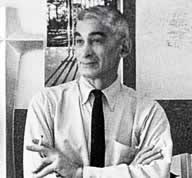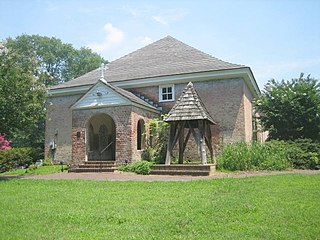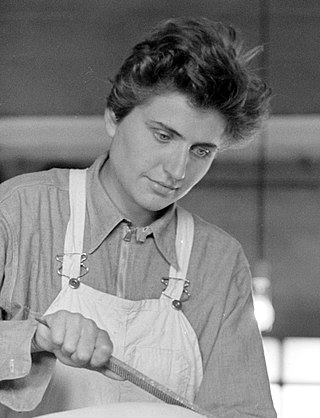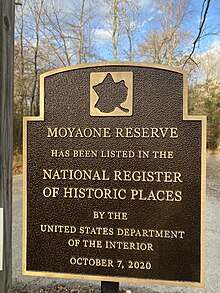
Waldorf is a census-designated place in Charles County, Maryland, United States. Located 23 miles (37 km) south-southeast of Washington, D.C., Waldorf is part of Southern Maryland. Its population was 81,410 at the 2020 census, making it the fourth-most populous community in the state. Waldorf has experienced dramatic growth, increasing its population 16-fold from fewer than 5,000 residents in 1980 to its current population. It is now the largest commercial and residential area in Southern Maryland as well as a major suburb in the Washington metropolitan area.

Accokeek, "at the edge of the hill" in Algonquin, is a census-designated place (CDP) located in Prince George's County, Maryland, United States. The CDP is located on the Potomac River, borders Charles County and is approximately 17 miles from Washington. It is a part of the Washington metropolitan area. The population of the CDP, as of the 2020 United States Census was 13,927.

Mount Vernon is an American landmark and former plantation of Founding Father, commander of the Continental Army in the Revolutionary War, and the first president of the United States George Washington and his wife, Martha. The estate is on the banks of the Potomac River in Fairfax County, Virginia. It is located south of Washington, D.C., and Alexandria, Virginia, and is across the river from Prince George's County, Maryland.
The Potomac Heritage Trail, also known as the Potomac Heritage National Scenic Trail or the PHT, is a designated National Scenic Trail corridor spanning parts of the mid-Atlantic region of the United States that will connect various trails and historic sites in Virginia, Maryland, Pennsylvania, and the District of Columbia. The trail network includes 710 miles (1,140 km) of existing and planned sections, tracing the natural, historical, and cultural features of the Potomac River corridor, the upper Ohio River watershed in Pennsylvania and western Maryland, and a portion of the Rappahannock River watershed in Virginia. The trail is managed by the National Park Service and is one of three National Trails that are official NPS units.

Marshall Hall, Maryland is the site of the Marshall family mansion. It is now part of Piscataway Park operated by the National Park Service. Marshall Hall is located near Bryans Road in Charles County, Maryland, next to the Potomac River, more or less across from Mount Vernon, Virginia, the home of George Washington. The home was one of the finest built on the Maryland shore of the Potomac in the early 18th century. The Marshall family were minor gentry and owned as many as 80 slaves by the early 19th century.

The Washington Suburban Sanitary Commission is a bi-county political subdivision of the State of Maryland that provides safe drinking water and wastewater treatment for Montgomery and Prince George's Counties in Maryland except for a few cities in both counties that continue to operate their own water facilities.

Augustine Washington Sr. was an American planter and merchant. He was the father of the first president of the United States, George Washington. Born into the planter class of the British colony of Virginia, Washington owned several slave plantations, from which he derived the primary source of his wealth. He also speculated in land development and owned an iron mine. Although Washington never sat in the House of Burgesses, unlike his father and son, he served in various government positions in the counties where he owned land.
Turkey Tayac, legally Philip Sheridan Proctor (1895–1978), was a Piscataway leader and herbal medicine practitioner; he was notable in Native American activism for tribal and cultural revival in the 20th century. He had some knowledge of the Piscataway language and was consulted by the Algonquian linguist, Ives Goddard, as well as Julian Granberry.

The Piscataway or Piscatawa, are Native Americans. They spoke Algonquian Piscataway, a dialect of Nanticoke. One of their neighboring tribes, with whom they merged after a massive decline of population following two centuries of interactions with European settlers, called them the Conoy.

Piscataway Park is a National Park Service-protected area located 20 miles (32 km) southwest of downtown Washington, D.C. in and around Accokeek, Maryland. It protects the National Colonial Farm, Marshall Hall, and the Accokeek Creek Site. The park is located across the Potomac River from George Washington's Mount Vernon estate.

Charles M. Goodman was an American architect who made a name for his modern designs in suburban Washington, D.C., after World War II. While his work has a regional feel, he ignored the colonial revival look so popular in Virginia. Goodman was quoted in the 1968 survey book Architecture in Virginia as saying that he aimed to "get away from straight historical reproduction."
Farmland preservation is a joint effort by non-governmental organizations and local governments to set aside and protect examples of a region's farmland for the use, education, and enjoyment of future generations. They are operated mostly at state and local levels by government agencies or private entities such as land trusts and are designed to limit conversion of agricultural land to other uses that otherwise might have been more financially attractive to the land owner. Every state provides tax relief through differential (preferential) assessment. Less common approaches include establishing agricultural districts, using zoning to protect agricultural land, purchasing development rights, and transferable development rights. It is often a part of regional planning and national historic preservation.

Hog Island sheep are a breed of sheep descended from animals first brought to Virginia's Hog Island in the 18th century. During the 1930s and 1940s, storm conditions forced the island's residents to evacuate, leaving some sheep behind. These sheep adapted to the environment free of human intervention, becoming feral.

Accokeek Creek Site, also known as Moyaone, is an archaeological site in Prince George's County, Maryland, located along the Potomac River across from Mount Vernon in today's Piscataway Park, which was inhabited intermittently since 2000 BC. Accokeek Creek Site was declared a National Historic Landmark in 1964.

St. John's Church, St. John's Episcopal Church, or St. John's Episcopal Church, Broad Creek, is a historic Episcopal church located at 9801 Livingston Road in Fort Washington, Prince George's County, Maryland. It is a rectangular Flemish bond brick structure with a bell hipped roof. The interior features a barrel vaulted ceiling with an intricate support system.
The Blue Ridge Land Conservancy (BRLC), formerly known as the Western Virginia Land Trust (WVLT), is a non-profit land trust and conservation organization headquartered in Roanoke, Virginia that seeks to preserve the wilderness and farmlands in the western portion of the Commonwealth of Virginia from excessive commercial development. BRLC's service area contains ten counties: Bedford, Botetourt, Craig, Floyd, Franklin, Montgomery, and Roanoke.

The Ossabaw Island Hog or Ossabaw Island is a breed of pig derived from a population of feral pigs on Ossabaw Island, Georgia, United States. The original Ossabaw hogs are descended from swine released on the island in the 16th century by Spanish explorers. A breeding population has been established on American farms off the island, but they remain a critically endangered variety of pig.

Lenore Thomas Straus was an American sculptor and author.

Hard Bargain Farm is the former country estate and working farm of Alice and Henry Ferguson. It is located at 2001 Bryan Point Road in Accokeek, Maryland, overlooking the Potomac River. The property, now a smaller portion of the 330 acres (130 ha) they purchased, was developed by them into a "country garden". Alice Ferguson, an artist, produced a significant body of her work here, and oversaw both the operations of the farm they established, and studied the prehistoric archaeological remains found on the property. The Fergusons established the Ferguson Foundation in 1954 to manage the property. The foundation operates the property as an educational center focused on land stewardship and historical farming practices in the region. The property includes a heavy timber frame tobacco barn originally constructed between about 1830 and 1850, and rebuilt in the post-American Civil War era. Popular events include the annual Oktoberfest, and "theater in the woods" productions.

Henry Gardiner Ferguson was an American geologist with the United States Geological Survey (USGS). He worked primarily in Nevada and was a pioneer in the geology of the central Great Basin, producing many publications, including multiple USGS geological maps of central Nevada. Ferguson was a lifelong friend and colleague of Levi Noble, a mentor to Ralph Roberts, and worked extensively with Siemon Muller. Along with his wife Alice Ferguson, he helped found the Moyaone Reserve community in Accokeek, Maryland.





















